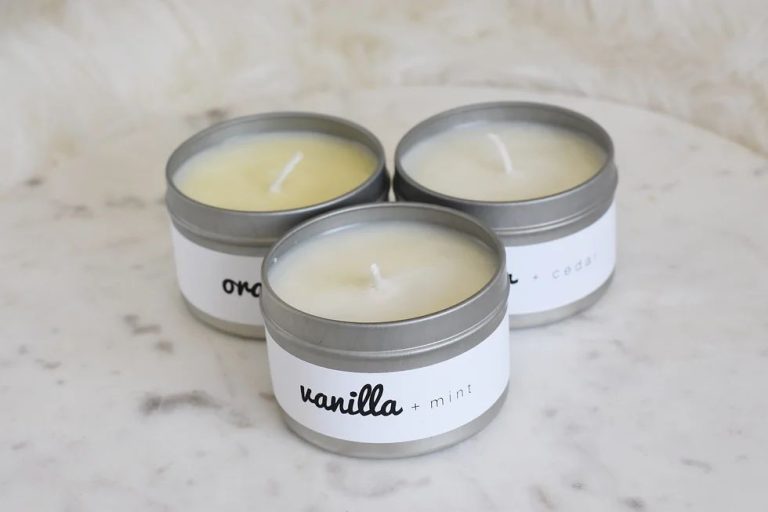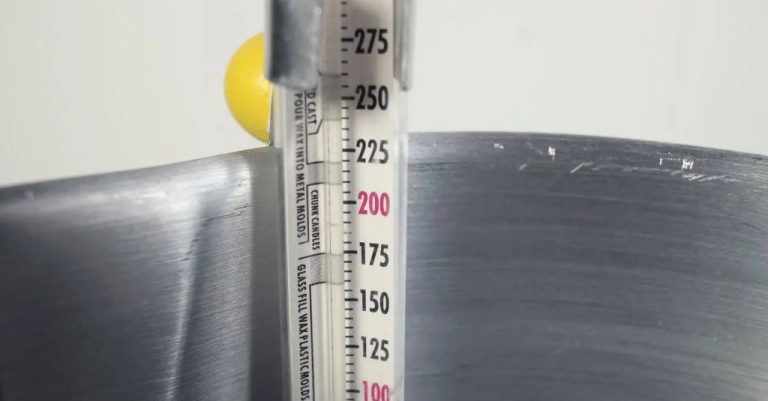What Are The Best Wax Melts Made Of?
Wax melts are pieces of scented wax that, when heated, release a fragrant aroma to fill your home. They have gained immense popularity in recent years for their safe and simple way of making any space smell delightful.
Unlike candles, wax melts don’t have a wick so there is no flame. You simply place a wax melt into a wax warmer, which gently heats the wax, melting it and dispersing the scent. This makes wax melts an excellent option for homes with kids and pets, as there is no open flame to worry about.
Wax melts can be used in any room of your home and are a great way to keep your space constantly smelling fresh and pleasant. They come in an endless variety of scents, from fruity and floral, to woodsy and spicy. You can find wax melts to match any mood or complement any decor style.
Paraffin Wax
Paraffin wax is one of the most common waxes used in wax melts. It is derived from petroleum and is a byproduct of oil refining. Paraffin wax has some advantages and disadvantages when used in wax melts:
Pros:
- Inexpensive – Paraffin wax is very affordable compared to natural waxes.
- High melting point – It has a melting point between 115-150°F, allowing wax melts to keep their shape at room temperature.
- Good fragrance throw – Paraffin wax helps fragrance oils release their scent efficiently when melted.
Cons:
- Petroleum-based – Since it is derived from crude oil, some may consider it not as natural compared to plant-based waxes.
- May irritate sensitive skin – The fragrance chemicals and dyes used in paraffin wax can cause irritation for those with allergies.
- Not biodegradable – Paraffin wax takes a very long time to break down in the environment compared to natural waxes.
When working with paraffin wax, proper ventilation is recommended as the wax can release fumes when heated. People with respiratory issues may want to avoid paraffin-based wax melts. Overall, paraffin wax is very commonly used in wax melts due to its low cost and performance, but natural plant-based waxes are growing in popularity.
Soy Wax
Soy wax has become an increasingly popular choice for wax melts. Made from hydrogenated soybean oil, soy wax is a renewable and environmentally friendly option. Here are some of the pros and cons of using soy wax:
Pros:
- Soy wax is made from a renewable resource, as soybeans can be grown year after year.
- It is biodegradable and compostable, making it more environmentally friendly than paraffin wax.
- Soy wax has a lower melting point than paraffin, so it releases fragrance well without getting too hot.
- It’s easy to work with and blends well with other waxes and oils.
Cons:
- Soy wax is more expensive than paraffin wax.
- It can produce less scent throw than paraffin wax.
- The growing demand for soy wax has raised some environmental concerns about large-scale soybean farming.
Overall, soy wax is a good option for environmentally conscious consumers. When sourced responsibly, it provides a renewable and biodegradable alternative to paraffin wax.
Beeswax
Beeswax is an all-natural ingredient that comes directly from honeybees. Many handmade candle makers use beeswax in their products because it has a number of advantages compared to paraffin wax:
Pros:
- Beeswax has a nice subtle honey-like scent.
- It burns cleaner than paraffin – beeswax candles produce little to no soot.
- Beeswax is biodegradable and renewable.
- It has a natural golden color so dyes are often not needed.
Cons:
- Beeswax candles burn faster than paraffin candles, so they don’t last as long.
- The wax can be quite expensive compared to paraffin.
- If not sourced ethically, bee populations can be negatively impacted.
When sourcing beeswax, it’s important to look for ethical and sustainable practices. Choose local beekeepers who harvest only excess beeswax and do not harm the bee colonies. There are also fair trade beeswax options available. With responsible sourcing, beeswax can be an excellent natural ingredient for candle making.
Gel Wax
Gel wax has become increasingly popular for wax melts and tarts. It has a smooth, gel-like texture that results in vivid fragrance oils and long-lasting scents. Here are some of the main pros and cons of using gel wax:
Pros:
- Strong scent throw – The density of gel wax allows it to hold high concentrations of fragrance oil, producing bold aromas.
- Slow-melting – Gel wax melts slowly over time, meaning scents are released gradually for hours.
- Soft texture – It has a creamy, gel-like texture that creates an appealing look for wax melts.
- Easy to remove – Gel wax doesn’t adhere as stubbornly to warmers. Leftover wax scrapes off cleanly.
Cons:
- Higher cost – Gel wax tends to be more expensive than basic waxes.
- Can be brittle – The gel texture makes it somewhat brittle and prone to crumbling.
- Messier – Its soft texture means spilled wax can be messier to clean up.
- Special care – It requires careful heating and handling to maintain its texture.
Overall, gel wax is ideal for wax melt enthusiasts who want strong scents and intriguing visual textures. It releases fragrance slowly for lasting aromas. Just be prepared to pay a little more and take extra care when working with its unique gel properties.
Vegetable Wax Blends
Vegetable wax blends have become an increasingly popular option for making wax melts. These blends combine different vegetable-based waxes to create a custom wax formula. Some common vegetable waxes used in blends include soy, palm, coconut, rapeseed, and sunflower wax.
The main benefit of using a vegetable wax blend is the ability to customize the properties of the wax. Blenders can experiment with different wax ratios to achieve the desired scent throw, texture, color vibrancy, and burn time. For example, adding more coconut wax can increase scent intensity, while additional palm wax can create a smoother wax texture.
There are many pre-formulated vegetable wax blend bases available to purchase. These provide a good starting point, though many crafters enjoy tweaking blends to create their own unique formulas. When custom blending, it’s important to carefully research wax properties and test different ratios to find the ideal combination for your needs.
Overall, the versatility and customization potential of vegetable wax blends makes them a smart choice for wax melt makers looking to experiment and refine their recipes. The ability to control the wax characteristics allows for fine-tuning the melt performance.
Coconut Wax
Coconut wax is made from the oils of coconut palms. It has become increasingly popular for wax melts and candles due to its hard, brittle texture and high melting point. Here are some of the pros and cons of using coconut wax for wax melts:
Pros:
- Excellent scent throw – Coconut wax helps fragrance oils release their scents more efficiently than other waxes.
- Hard finish – When cooled completely, coconut wax has a very hard, brittle finish that makes it easy to break wax melts apart.
- High melting point – The high melting point of coconut wax (around 92°F/33°C) allows wax melts to last longer before melting.
- Natural wax – Coconut wax is a natural, renewable resource that comes from coconut palms.
Cons:
- Brittle texture – While the hardness of coconut wax is good for wax melts, it can also make the wax prone to crumbling and cracking.
- Difficult to dye – The natural color of coconut wax is off-white. Dye tends to mottle or bleed when mixed with coconut wax.
- Expensive – Coconut wax is generally more expensive than alternatives like paraffin or soy wax.
Overall, coconut wax makes an excellent base for wax melts. Its scent throw and hard finish are ideal properties. Just be prepared for the higher price tag and difficulties with coloring.
Palm Wax
Palm wax is derived from the palm oil industry and offers some unique benefits as well as drawbacks compared to other wax melts. On the plus side, palm wax melts tend to be very hard with a high melting point, making them last longer than softer waxes. The texture is smooth and even when melted, providing excellent fragrance throw. Palm wax is also relatively inexpensive due to its agricultural origins.
However, sustainability is a major concern with palm wax. Palm oil production is associated with deforestation, loss of biodiversity, and unethical labor practices. Many environmental and human rights groups urge consumers to avoid palm oil-derived products. While some palm wax may come from certified sustainable sources, traceability in the supply chain is often lacking. Conscientious consumers may want to avoid palm wax melts until more sustainable sourcing can be verified.
The longevity and performance of palm wax can make it appealing for wax melt makers looking purely at function. But its environmental and ethical drawbacks should give eco-conscious consumers pause when considering this ingredient. Weighing the pros and cons of palm wax along with alternative waxes will lead to the most informed choice.
Best Practices
Following some best practices when using wax melts can help optimize performance and safety:
Proper Melting and Cleaning
Always follow the manufacturer’s instructions for melting wax. Use a dedicated wax warmer, not a candle or open flame. Keep waxes away from children and pets when melting. Allow the wax to fully pool out before removing from the warmer. Use care when handling melted wax to avoid burns. Clean the wax warmer regularly by allowing wax to fully melt, wiping away residue with a paper towel, then dry thoroughly before adding new wax.
Safety Tips
Never leave a wax warmer unattended when turned on. Unplug when not in use. Place on a stable, level surface away from flammable materials. Most wax melts are designed for home use only, not public/business spaces subject to fire codes. Ventilate the room when melting wax as scent chemicals can irritate some individuals. Discontinue use if you experience headaches, nausea or breathing issues.
Conclusion
In summary, the wax type you choose for your wax melts comes down to personal preference and what properties are most important to you. Paraffin wax is inexpensive and readily available, making it a popular choice. Soy wax is also very common and has a great scent throw. Beeswax and gel wax are natural options, while coconut and palm waxes provide excellent scent dispersion. Vegetable wax blends allow you to get the best qualities of multiple waxes in one. There is no definitively “best” wax for melts – it depends on your priorities. Many people find a soy-paraffin or soy-palm blend offers the best combination of performance, scent, and affordability. The top recommended wax types overall seem to be soy, paraffin, palm, and beeswax.




